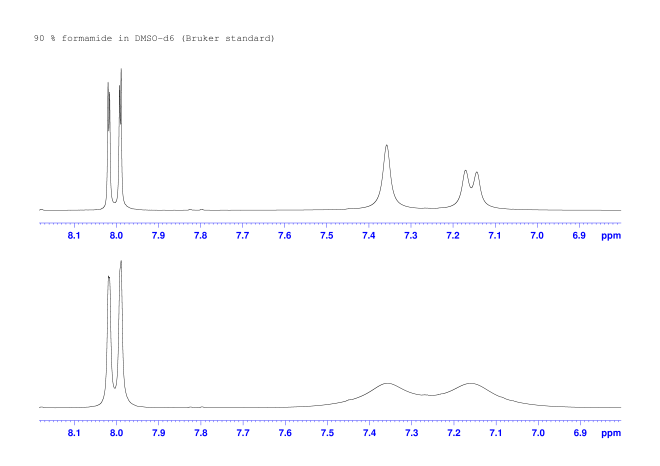To setup TopSpin-2.1-pl6 on Linux Mint-18.1-32bit (Serena) with the Cinnamon desktop inside VirtualBox on Windows:
Download VirtualBox from here: https://www.virtualbox.org/wiki/VirtualBox
Download Linux Mint 18.1 (Serena) from here: https://www.linuxmint.com/
Install VirtualBox and the VirtualBox Extension Pack.
Create a new virtual machine and install Mint-18.1, reboot the VM afterwards.
Install the “Guest Additions” in the Mint-VM.
If you get a message “Cinnamon is currently running without video hardware acceleration…”, shutdown the VM and enable 3D acceleration in the VirtualBox settings (“Settings” > “Display” > “Enable 3D acceleration…”) and re-start the Mint-VM.
Run the “Update Manager”, select appropriate mirrors, and update everything. If you get a prompt about keeping/replacing a changed config file, select “Keep”.
Edit the /etc/group file to create the groups “nmrsu” and “flexlm”.
Edit /etc/passwd to create users “nmrsu” and “flexlm”.
Insert the TopSpin-2.1-pl6 DVD and run the “install” file, select either “installation for spectrometer” or “processing only”, provide the root password when prompted. There will be errors reported at the end of the installation process for flexlm and diskless (the specific errors depend on whether the installation was for “spect” or “proc only”).
Copy your TopSpin licence file “licence.dat” into the directory “/usr/local/flexlm/Bruker/licences”.
If you want your TopSpin configured to match your spectrometer, copy the “spect” directory from the spectrometer into the directory “/opt/topspin/conf” in the Mint-VM.
Start TopSpin by running the “topspin” file in the directory “/opt/topspin/prog/bin”.
Run “expinstall” when prompted and either select one of the pre-configured defaults or your own “spect” and TopSpin should be operational.
Some aspects of TopSpin (like the graphical display of pulse programs) may produce font errors like “Cannot convert string…”. To fix this, install some non-standard font-related packages with the terminal:
sudo apt-get install fontconfig xfs xfstt xfonts-75dpi xfonts-100dpi
xset +fp /usr/share/fonts/X11/75dpi
xset +fp /usr/share/fonts/X11/75dpi
The “xset” commands are only temporary for the current Cinnamon session. To make the fonts available permanently (for the current user):
Copy the file “.xinitrc” from the “/etc/X11/xinit” directory to the user’s home directory, usually “/home/<username>”. Edit the new file and add the xset commands to the file.
To create a desktop icon for TopSpin:
Right-click on the desktop and select “Create new launcher here…”.
Fill out as follows:
Name “TopSpin”
Command “/opt/topspin/topspin”
Comment “TopSpin-2.1-pl6”
Check “Launch in Terminal”
Click on the rocket icon, browse to “/opt/topspin/classes/prop” and select a TopSpin icon file (most likely a “.png” file because the file browser doesn’t see the “.ico” file).
Click “OK” to finish. When prompted, you can choose to add the launcher to the “Other” category of the programs-type menu, select either yes or no.
To change the TopSpin icon with a white square background (from the “.png” file) to the one from the “.ico” file, edit the newly created launcher file and simply change the name of the “png” file to that of the “ico” file.

